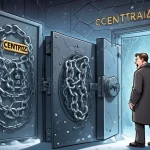WazirX Relaunch: True Recovery or Smokescreen After $230M Hack?

Has WazirX Really Recovered or Just Rebranded the Damage?
WazirX, previously India’s top cryptocurrency exchange, made headlines with its relaunch on October 24, 2025, following a brutal $230 million hack in July 2024 that left users high and dry. Yet, as the platform attempts to rise from the ashes, persistent issues like frozen funds, blocked crypto withdrawals, and a tidal wave of user distrust paint a far less rosy picture. Is this a true recovery, or merely a polished facade masking deeper wounds?
- Massive Hack Fallout: A $230 million breach in 2024 crippled WazirX, freezing accounts for over a year.
- Relaunch Struggles: Despite reopening in 2025, users face missing funds and locked crypto withdrawals.
- Trust in Tatters: Social media outrage and legal setbacks reveal skepticism over WazirX’s recovery narrative.
The Hack: A $230 Million Disaster
The nightmare began in July 2024 when WazirX suffered a staggering $230 million loss due to a breach in a multi-signature wallet, a security setup requiring multiple private keys to authorize transactions, designed to prevent single-point failures. Managed partly with custodial partner Liminal, this wallet’s compromise—potentially through phishing or insider collusion, though details remain murky—sent shockwaves through India’s crypto community. For the uninitiated, such wallets are akin to a bank vault needing several keys to open, so a breach suggests either staggering negligence or a systemic flaw. The fallout was immediate: accounts frozen, operations halted, and users left in limbo as WazirX entered a restructuring process under its Singapore-based parent, Zettai Pte Ltd. This wasn’t just a technical hiccup; it was a betrayal of trust at a time when Indian crypto enthusiasts already faced regulatory quicksand.
How the Hack Happened: Unpacking the Multisig Mess
While WazirX has kept the exact cause of the breach under wraps, early speculation points to sophisticated phishing attacks or even insider involvement targeting the multi-signature setup. This isn’t a simple password hack; compromising a multisig wallet means bypassing multiple layers of approval, hinting at either a catastrophic lapse in protocol or a deeper betrayal within the custodial chain involving Liminal. This incident isn’t unique to WazirX—centralized exchanges globally have faced similar failures, underscoring the fragility of third-party custodians. For Bitcoin purists, it’s a glaring reminder of why self-custody reigns supreme. Relying on platforms to safeguard your assets is like handing your house keys to a stranger and hoping they don’t throw a party. The lesson? Exchanges must prioritize ironclad security—or users will keep paying the price.
Relaunch or Rebrand? User Fury Unpacked
Fast forward to October 2025, and WazirX trumpets its return, backed by an audit from Alvarez & Marsal Disputes & Investigations Pte Ltd claiming $478.5 million in Net Liquid Platform Assets (NLPA)—essentially, the liquid value of assets the platform holds to cover user balances, stored across custodial wallets like BitGo. They assert 85% of user funds have been distributed. Sounds promising, right? Not so fast. A whopping 34% of balances remain frozen under “ongoing investigations,” and crypto withdrawals are outright blocked, with the exchange citing “evolving regulations” as the excuse. Indian Rupee (INR) deposits, withdrawals, and trading? Those are fine. But if you’re itching to move your Bitcoin or Ethereum to a personal wallet, you’re out of luck.
For those new to the space, crypto withdrawals are a cornerstone of user autonomy—being able to transfer digital assets to a secure, personal wallet or another platform is non-negotiable. Blocking this while allowing fiat transactions reeks of a digital padlock: users can enter, but their assets are on house arrest. Social media platforms like X are ablaze with frustration over this half-baked reactivation. One user captured the absurdity perfectly:
“So I can put money in, but not take it out?… You call this reactivation? This is like unlocking the door but keeping the exit closed.”
Others point to discrepancies in portfolio values post-rebalancing—a process where user holdings are adjusted to reflect losses or recoveries, often sparking accusations of unfairness. Ashish, a vocal critic on X, didn’t hold back:
“I lost nearly ₹40,000 because of @WazirXIndia’s so-called ‘Rebalancing’ process. If my original tokens were still in my portfolio, their value today would be around ₹1.5 lakh. This is daylight robbery from loyal users.”
Another user accused WazirX of inflating figures during rebalancing only to shortchange users in the final tally:
“This is pure betrayal, @WazirXIndia. You showed higher NLPA values during rebalancing, but the final credited amount is way less. People trusted your platform—stop misleading users and show the real numbers!”
Recovery Tokens: Solution or Smoke and Mirrors?
In a bid to appease users, WazirX introduced Recovery Tokens (RTs), a compensation mechanism where tokens are issued to cover losses, with promises of quarterly buybacks based on platform profits and recovery efforts. Think of it as an IOU scribbled on a napkin at a bar you’ve never visited—sounds nice, but will it hold up? The tokenomics are murky at best: how are buybacks funded if profits are slim? What’s the real value of an RT when trust in the issuer is already shattered? Historically, similar schemes—like Bitfinex’s post-hack tokens in 2016—have left users waiting years for full redemption, if it ever happens. Unsurprisingly, skepticism runs rampant. One user on X cut to the chase:
“They’re asking us to trust them again when trust is exactly what they destroyed.”
Without concrete details on liquidity or timelines, RTs feel more like a PR stunt than a lifeline. If WazirX wants this to work, they’ll need to back these tokens with transparency and hard cash—not just empty promises.
Legal Blows: Madras High Court Ruling Explained
Beyond user outrage, WazirX faces heat on the legal front. On October 28, 2025, the Madras High Court delivered a significant ruling in favor of investor Rhutikumari, who demanded the release of her XRP coins worth ₹1.98 lakh. Justice Venkatesh clarified a crucial point: her XRP holdings were unaffected by the hack, which targeted ERC-20 tokens (a common standard for tokens on the Ethereum blockchain, for those unfamiliar). His ruling was unambiguous:
“What were held by the applicant as cryptocurrencies were 3,532.30 XRP coins. What were subjected to cyber attack… were ERC-20 coins, which are completely different.”
This isn’t just a win for one person; it’s a potential floodgate for legal challenges in India, directly challenging WazirX’s restructuring under Singapore jurisdiction via Zettai Pte Ltd. The court affirmed that Zanmai Labs Pvt Ltd, WazirX’s Indian operator registered with the Financial Intelligence Unit (FIU), falls under Mumbai’s purview. Historically, Indian courts have been cautious with crypto disputes, often deferring to regulatory gray areas, but this decision signals a shift towards user protection. It’s a slap to WazirX’s attempts to dodge local accountability, and a beacon for users burned by frozen funds.
Regulatory Fog in India: A Convenient Shield?
WazirX’s excuse of “evolving regulations” for blocking crypto withdrawals demands scrutiny against India’s chaotic crypto policy landscape. The Reserve Bank of India (RBI) once banned banks from dealing with exchanges in 2018, a move overturned by the Supreme Court in 2020. Since then, a punishing 30% capital gains tax on crypto profits and a 1% transaction deduction at source (TDS) have made trading a financial slog. Yet, no explicit law bans crypto withdrawals—WazirX’s claim feels more like a dodge than a mandate. Is this unseen RBI pressure, or a cover for post-hack liquidity issues? The FIU mandates registration for anti-money laundering compliance, which WazirX’s Indian arm has met, but that doesn’t equate to a withdrawal freeze. This regulatory fog is a double-edged sword: it lets exchanges play the victim while users suffer. For advocates of decentralization, it’s another reason to abandon centralized gatekeepers—Bitcoin doesn’t care about bureaucratic whims.
PR Disaster: Fake Cheers Amid Real Tears
WazirX’s public relations efforts have only deepened the rift. Around the relaunch, the hashtag #WelcomeBackWazirX trended on X, but instead of inspiring hope, it fueled accusations of paid influencers and orchestrated positivity. Users saw through the smoke, with Ajay Kashyap on X delivering a brutal takedown:
“Anyone still trusting #WazirX seriously needs some mental help. Once trust is broken, no amount of marketing campaigns or paid interviews can ever buy it back.”
This isn’t just about hurt feelings; it’s about a user base burned worse than charcoal forgotten on a summer grill. When genuine grievances are drowned out by what looks like engineered hype, it erodes any chance of rebuilding credibility. Transparency, not hashtags, is the only currency that matters now.
Centralized Exchanges: A Flawed Bridge to Crypto Freedom
WazirX’s meltdown isn’t an anomaly—it’s a glaring symptom of the inherent flaws in centralized exchanges. These platforms act as gatekeepers, holding user funds in custodial wallets, often with little accountability until disaster strikes. Bitcoin was born to eliminate middlemen, offering a permissionless system where “not your keys, not your crypto” is gospel. Yet, exchanges like WazirX remain a necessary evil for onboarding newcomers who aren’t ready to navigate self-custody or decentralized exchanges (DEXs). I’ll concede their role in adoption, but at what cost? Each hack—think FTX in 2022 or now WazirX—drags the industry’s reputation through the mud, scaring off potential users. For Bitcoin maximalists, the solution is clear: take control of your assets. But even I’ll admit that altcoins and blockchains like Ethereum, with their smart contracts and niche use cases, drive innovation Bitcoin doesn’t aim to cover. WazirX’s failure isn’t just their problem; it’s a wake-up call for the entire ecosystem.
Impact on India’s Crypto Ecosystem
WazirX’s troubles ripple beyond its user base, casting a shadow over India’s crypto scene. Other exchanges like CoinDCX now face heightened scrutiny—will users trust any centralized platform after this? Altcoin trading, already niche in a Bitcoin-dominated market, could take a hit if withdrawal fears persist. Paradoxically, this could accelerate a shift to DEXs, where users trade directly via smart contracts without intermediaries, or push adoption of self-custody solutions. It aligns with effective accelerationism—the idea that crises can fast-track progress towards decentralized systems. Yet, there’s a risk: sustained distrust might deter India’s burgeoning crypto community, stunting growth in a country with massive potential for digital finance. WazirX’s mess could either be a catalyst for disruption or a setback for mass adoption. Only time will tell.
What Could Save WazirX?
So, can WazirX claw its way back from the brink? The road is steep and littered with the wreckage of broken promises. Step one is non-negotiable: unlock crypto withdrawals and unfreeze all unaffected balances—yesterday. Step two is brutal honesty about liquidity, hack details, and Recovery Token value. Audits like Alvarez & Marsal’s are a start, if credible, but they mean nothing without tangible user access. Finally, ditch the PR fluff. No amount of trending hashtags will mask the stench of betrayal. If WazirX can’t deliver, they’re just delaying the inevitable. For users, the lesson is stark: centralized platforms are a gamble. Maybe it’s time to embrace the ethos of decentralization before the next hack hits. For more insights into this ongoing saga, check out this detailed analysis on WazirX’s recovery challenges.
Key Takeaways and Questions on WazirX’s Relaunch
- What caused WazirX’s initial shutdown?
A $230 million hack in July 2024 compromised a multi-signature wallet, forcing a freeze on accounts and a complete operational halt for restructuring. - How much of user funds have been returned since reopening?
WazirX claims 85% of funds are distributed, with $478.5 million in verified assets, yet 34% of balances remain frozen. - Why are crypto withdrawals still blocked?
The exchange points to “evolving regulations,” allowing only INR transactions and trading while keeping digital assets locked. - What are Recovery Tokens, and are they effective?
They’re a compensation tool with promised quarterly buybacks, but doubt persists over their real value without restored trust and clear funding mechanisms. - How does the Madras High Court ruling affect WazirX?
The decision to release an investor’s unaffected XRP coins sets a precedent for legal action in India, challenging WazirX’s Singapore restructuring shield. - Can WazirX rebuild user trust after this fiasco?
It’s a steep climb—full fund access and radical transparency are essential, but the damage may already be too deep for many. - What broader lessons does this teach the crypto community?
Centralized exchanges remain vulnerable; self-custody and decentralized systems offer a safer path, reinforcing Bitcoin’s core promise of financial sovereignty.
The WazirX saga is a bitter pill for India’s crypto enthusiasts and a stark reminder that the path to decentralized finance is fraught with pitfalls. While we push for disruption and freedom from traditional systems, failures like this highlight the urgent need for better security, clearer regulations, and a relentless focus on user empowerment. Will WazirX’s missteps finally nudge Indian users towards self-custody, or are centralized exchanges still the necessary stepping stone for mass adoption? The answer might shape the future of crypto in the region.



